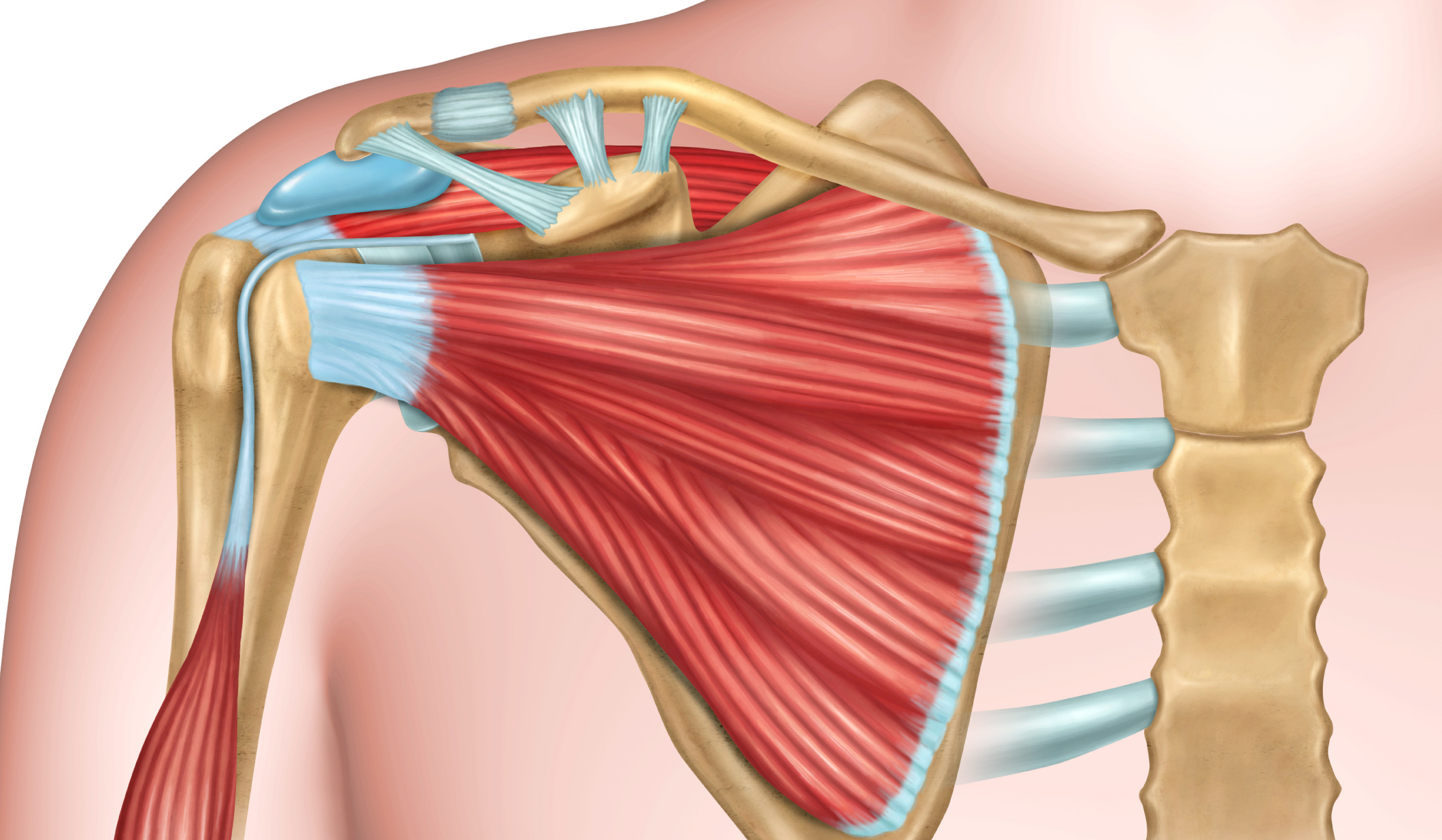The rotator cuff are a group of four muscles that originate from your scapula (shoulder blade) and form a cuff around the ball of the humerus (upper arm bone). Your shoulder is a ball and socket joint and is designed to have large of amounts of movement but this results in decreased stability of the joint. A major function of the rotator cuff is to help to provide stability for the shoulder. The four muscles are called supraspinatus, infraspinatus, subscapularis and teres minor. There are several different types of injury for the rotator cuff, including:
- Tendinopathy
- Shoulder impingement syndrome
- Rotator cuff tears, these could be small or large
- Calcific tendonitis
The Injury
Shoulder pain will be felt from the tip of the shoulder to the elbow, this is due to it’s nerve supply. The first thing to consider is whether your pain started gradually or was it from a specific incident. If it was from an incident and you are struggling to lift your arm due to pain and/or weakness then you should seek medical assistance via a physio or a doctor. A rotator cuff tear will mean that it is difficult to lift your arm up to shoulder level. There are several other reasons why this may be the case, but it needs to be assessed. A small cuff tear can resolve with rehabilitation, a larger tear may require surgery.
The most common rotator cuff injuries have a gradual onset and involve shoulder impingement. The tip of the shoulder blade sits above the ball and socket part of the shoulder joint. If the ball rides upwards and sits slightly high the structures that lie in this space can be ‘impinged’. The rotator cuff tendons are one of these structures. As you lift your arm this space is narrowed most at 90 degrees and then once your arm is overhead the space gets larger again. So an ‘arc of pain’ from roughly 70 – 120 degrees when you lift your arm is a common sign of shoulder impingement. Why this happens is multi faceted and needs to be assessed. Common reasons are tightness in the posterior capsule of the shoulder joint, weakness of the rotator cuff or poor scapular control. A physio will determine which of these is the case for your shoulder impingement and be able to show you the exercises to resolve the issue.
Tendinopathy of the rotator cuff is usually a consequence of impingement. Like any tendinopathy it is important to load the tissue with specific rehabilitation exercises. The reasons for any impingement would also need to be rectified as mentioned above.
Calcific tendonitis is the formation of small bony deposits within the rotator cuff tendon. The reason for this happening is unclear, but it usually happens with patients of 40-50 years of age and is most common in females. With time the body re absorbs the bony deposits and the pain resolves. Full shoulder function should be regained.
Treatment
The shoulder joint is the most complex in the body and as such treatment can be very varied depending on the person and the specific injury. The arm is only attached to the rest of the skeleton via the collar bone attaching to the sternum (breast bone). As such the muscles of the shoulder provide a major role in how it functions. Any tightness or weakness needs to be resolved and this forms the major part of any shoulder injury rehabilitation. This focuses on rotator cuff strengthening and scapular strengthening and control. This only differs if surgery is required.
A rotator cuff tear can occur from a traumatic incident or from recurrent micro-trauma, and therefore can apply to an older patient. Any cuff tear will mean that there is a weak feeling when trying to lift your arm. If you have a larger tear you will not be able to lift it at all. This clearly requires medical assessment and potentially surgery. Whether you require surgery or not will be dependent on factors such as age, activity level and the degree of the tear. Rehabilitation following surgery can take 6-12 months. The alternative to surgery is conservative management with a rehabilitation program.
This is a guide for general information only. Injuries should be assessed by a qualified specialist such as a physiotherapist or doctor. There are complicating factors that may need to be assessed and addressed.











Hi, this is a comment.
To get started with moderating, editing, and deleting comments, please visit the Comments screen in the dashboard.
Commenter avatars come from Gravatar.